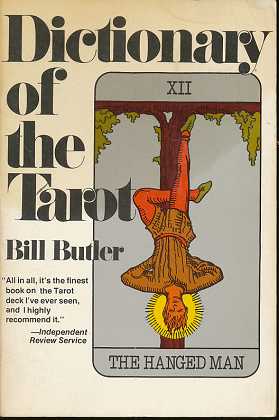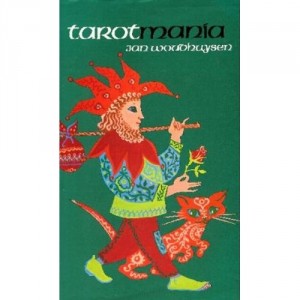There is more than one mythic history of the Tarot. It’s important to note that by mythic I don’t simply mean that the stories were made up and imaginary. Rather, myths are information conveyed in a story to indicate the importance of something. Aesop’s fables, for example, are myths explaining timeless truths in simple stories.
Although the Tarot has been used for hundreds of years, its active use as part of ceremonial magick really only dates back to the late 19th century. The key to this was the linking of the Tarot to the Kabalistic Tree of Life. This first appeared in print in an article by the Comte de Mellet in the 1781 book, Le Monde Primitif by Court de Gébelin, which noted that the number of paths on the Tree of Life matched the number of cards in the 5th suit of the Tarot. (One source claimed calling it the Major Arcana was created by Paul Christian, the pen name of Jean Baptiste Pitois in his book, The History and Practice of Magic, originally published in 1870. However I don’t think this is accurate as the timing is off.)
This was picked up by Eliphas Levi, who developed an initial system of correspondences between the Tarot and the Tree of Life. Levi was one of the leading lights of what has been called the French Occult Revival of the middle to end of the 19th century. Numerous mystical and magical Orders developed during this time, finally crossing the English Channel and resulting in the births of groups such as the Theosophical Society and the Hermetic Order of the Golden Dawn (although there may have been predecessors to the latter). The Golden Dawn changed Levi’s system to match their concepts. Aleister Crowley modified this a bit to meet his system. Frater Achad (Charles Stansfeld Jones) made some revolutionary changes, too, but these have been adopted by few people.
The bottom line is that today, Western ceremonial magick and the Tarot are intricately intertwined. Therefore, it makes sense to study the Tarot for more than one purpose.
Why the Tarot?
- The images on the Tarot are mythic and symbolic. Working with them, especially in meditation (such as described in Modern Magick), can help open your intuition.
- The Tarot can be a building block, a basis for understanding various correspondences used in magick.
- The Tarot can be used as an entry into the astral plane and Kabalistic Pathworking.
- The Tarot can be used as a guideline to spiritual development.
- And of course, the Tarot can be used for divination.
When most people start with the Tarot their purpose is to learn divination. That’s why I started to learn the Tarot. In my previous post I stated that I don’t think you should throw out the little booklet that comes with Tarot decks. Rather, you can use the books that come with the Tarot as a basis for learning more about the deck.
Even so, learning the Tarot can be daunting. You have 78 sometimes complex images to memorize, followed by learning about their interactions between each other and with the positions where you lay out the cards in a spread. This means there are many hundreds of thousands of potential meanings for the cards.
When you look at it this way, it’s kind of scary. How can you possibly learn all of those meanings? In NLP we call this being chunked up—only seeing all of those cards and their meanings as one impossible-to-learn whole. But we can chunk down and look at only a little at a time. We can begin by looking at the meaning of just one card. When we understand it we can expand our studies to the next card and continue in this pattern. Using this one-at-a-time method, the seemingly huge amount of information becomes smaller, bite-sized pieces that are easier to digest and learn.
This, however, brings up another, even more basic question: How do we learn?
Two Learning Methodologies
A little over a decade ago I spent time helping teach computer graphics at the University of Southern California (USC). One of the head instructors insisted that the students learn what the filters do in the application Adobe Photoshop by first applying them to an image. After the students saw the effect of the image, she would instruct on what the filters theoretically do.
This is a natural approach for a graphics professional. Use your eyes and see what happens. From there you can use deductive reasoning to understand what you see.
One student, however, absolutely refused to do this. He insisted on learning what the concepts of each filter were before he applied it to an image (the image was that of a rubber duck that came with the application). Only after he understood the inner functions of how the filter worked would he want to see what it did. This is more along the line of what is called inductive reasoning.
In fact, deductive (starting with the general and moving to the specifics) and inductive (starting at the specifics and coming to a general idea) are descriptive of the two major ways people learn. If you naturally learn one way and are being forced in school to try and learn the other way, you will have a difficult time. Many children who just have a different learning methodology and are labeled poor students are actually quite bright and merely don’t have teachers who can present information in a way where the student can learn.
How I Learned the Tarot
When I first decided to learn the Tarot, I purchased three popular books on the subject. I figured I could simply absorb their different approaches, merge the information, and become a Tarot reader. Unfortunately, all three books gave decidedly different information. My plan failed.
Next, I took a mail-order course from a group called The Associated Readers Of Tarot (the acronym of their name is TAROT). Although they are no longer around, they presented a system from which I could base my future learning. I learned each card and put it into a whole, then I expanded it. One way I expanded on this was to take the training from Paul Foster Case’s Builders of the Adytum (BOTA), a Golden Dawn derived group that has a major focus on the Tarot.
There were two books, both now out of print, that deeply influenced my advanced learning. This was not because they gave some inner secrets, but because they gave an approach that allowed my mind to have greater understanding.
The first was Dictionary of the Tarot by Bill Butler. In this book the author took each card and showed what a variety of authors gave for their meanings. Then he gave his own meaning which was supposed to be based on the other sources, but often seemed to have nothing to do with them. Although I still laugh at this, his approach triggered my concept of collecting the ideas of others, blending them, and coming up with my interpretation based on those ideas. However, I still felt limited and I didn’t know why. I didn’t “get” that I needed to add my own ideas and intuition.
The second book was Tarotmania (I think this was a terrible name for a good book*) by Jan Woudhuysen. On her website she writes,
This is the original Tarotmania book that I wrote in 1979 as a protest against all the mystical back-to-the- Egyptians books that explain the tarot cards. As far as I am concerned, I don’t believe in tarot cards, I just make use of the cards to find out what’s going on.
What I especially liked about her book was her way of organizing information. She made a chart (1979 was before the popularity of computer spreadsheets) with the name of each card in a column on the left and the name of each source a row going across the top. Thus, by simply looking down and across the sheet (as I recall, she suggested using large sheets of paper and pasting them on the wall) you could see the meanings given to each card by an authority. Then in the last box of the row, you could use your intuition combined with the information to come up with your own meaning of the card.
Your meaning may or may not agree with some or any of the experts, but it is your meaning. It can be just as valid as that of any authority if, in practice, your meaning is shown to be accurate.
There is no doubt that if you’re “chunked up,” learning something such as the Tarot, the Runes, astrology, or another divination system can seem like a difficult challenge. But if you determine your learning style—inductive or deductive—and “chunk down,” learning any of these powerful tools can become an adventure of spiritual self-empowerment.
*It was also published under the title Tarotherapy—still, in my opinion, not a great or appropriate name.










I know, because I was the author of that book.
1. I am 99% male – and I bitterly resent that a perfectly good name like Jan has now been appropriated, whereas us poor males can’t really appropriate girl’s names (and can only share a few like Evelyn).
2. Titles are chosen by the publisher and I totally agree that the US publisher’s choice of “Tarotherapy” was awful but I had no say in the matter
3. I did ask my UK publisher if I could use “Tarotmania” as a title; the name reflects the the secondary title (or why only an idiot would want to become a fool)
4. the most important part of the book is the method of using the cards, which is something that seems not to have been noticed by you. Whereas the meanings arepurely an aide memoire or pons asinorum. There are literally thousands of books on Tarot, there are only half-a-dozen on how to read the cards
5. the whole idea of the tarot meaning spreadsheet is that you would write it in pencil, and change and develop it as you went along.
Oh well
Hello Jan,
Thanks for reaching out to us, and for your inside information! Unfortunately, Don left us earlier this week—I know Don was always very appreciative of all information he could gather, so this would have been of especial interest to him (and likely would have been the start of a new conversation 🙂
Again, thank you–it is definitely helpful to have an author’s insight!
Brightest blessings!